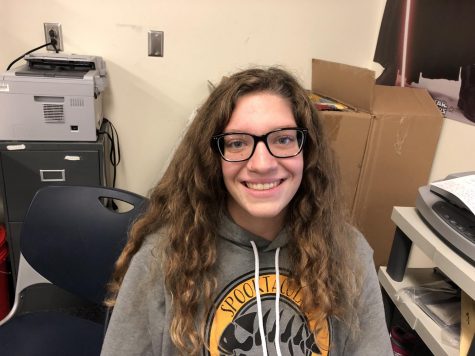Highschool in the Media
Whether it’s Mean Girls’sRegina George, High School Musical’sTroy Bolton, or Barbie herself, the life and appearance of the American teenager has been glorified by movies and TV shows for decades. But is it really accurate? Many would say it’s not. Social media has recently seen a rise in body positivity, and more people than ever are beginning accept the thought that beauty can come in all shapes, sizes, and colors.
One of the most common complaints about teens in today’s TV is that they aren’t actually teenagers at all. For example, Rachel McAdams was 26 years old when she played 17 year old Regina George in Mean Girls, according to biography.com. Similarly, Christian Navarro was 26 when he played 18 year old Tony Padilla in 13 Reasons Why.
Casting adult actors to play teenagers is not a new practice. In 1978’s Grease,Channing Stockard was 33 years old when she played Rizzo. Why would producers cast someone to play a character half her age? The answer anything from pursuit of recognizable actors to child labor laws. But how does it affect teens to see adult bodies portraying teenagers on TV?
“It can give [teenagers] the message that they’re supposed to look good all the time,” says clinical psychologist and teen and family expert, Dr. Barbara Greenberg, PhD.
Adolescence is a period of change, so there is no definite picture of what it looks like. However, casting adults with consistent appearances may be a problem. If an adult actor is shown playing a teen, it may give teenagers the unrealistic idea that they are supposed to have perfect skin and perfect hair at all times. Adolescent appearances change.
“Some days they’re thinner, they’re a little heavier, they have pimples, their hair is a little frizzy. It’s all okay,” says Greenberg.
“I think the media should try to include people that would represent all types of people to show them that they matter,” says Olathe North Sophomore Drew Paget.
“The teenagers on TV look too nice and put together. They don’t always show the hardships of teenage life,” explains Paget.
For a very long time, it was believed that in order for a woman to be attractive, she needed big breasts and a tiny waist, and that men needed to be big and muscular. People were “fat shamed” for decades, but many have decided to break this mold.
Thousands of people have taken to Twitter, voicing their support for plus-size individuals, and more plus-size and disabled models are joining the fashion industry than ever before. Many shows and movies have included overweight characters in a positive light, such as Steven Universe in his self-titled show, Kate Pearson of This is Us,and Netflix’s original movie Sierra Burgess is a Loser.
However, there are still many shows and movies which portray being overweight as negative or undesirable. One of the most prevalent examples of this today is Netflix’s original show, Insatiable.The show casts Debby Ryan as Patty Bladell, an overweight girl. She wires her jaw shut and loses 70 pounds, and therefore becomes “desirable,” getting boyfriends, joining beauty pageants, and remarking on the “magic” of being skinny.
However, Patty resents the fact that people only seem to like her once she loses weight. The people around her all objectify her and give her value only once she becomes “skinny.” Even before the show aired, the internet was outraged. Several users wrote about ending the “girl loses weight and becomes beautiful” trope. Others pointed out that nobody should have to lose weight to love themselves.
However, many Twitter users supported the idea that the show is trying to prove that people’s adoration for Patty as a result of losing weight is wrong. This includes leading actress Alyssa Milano herself.
“We are not shaming Patty. We are addressing (through comedy) the damage that occurs from fat shaming,” Milano explained on Twitter.
When teenagers see thin, fit, adult actors playing them on screen, some may believe that the way they look is wrong. This can lead to things like low self esteem, depression, and even eating disorders. Eating disorders are a huge issue among adolescents with an estimated 50% of teenage girls and 30% of teenage boys using unhealthy eating habits to control their weight, according to the organization Eating Disorder Hope. This is rarely shown on screen, with a few notable exceptions. Mean Girls, Heathers, Degrassi, andSkins all have at least one character with an eating disorder. There have even been a few more kid-friendly shows like The Suite Life of Zack and Codythat touched on the subject.
“I think [serious issues like eating disorders and bullying] should be included, but they should be approached in a manner so as to not make victims of such things feel excluded or even more victimized,” says Paget.
A study conducted by Bradley University in 2018 cites Western culture’s emphasis on thinness and objectification of people’s bodies as one of the root causes for body dissatisfaction, dieting, restriction, and, in some individuals, binge-eating.
Few disagree that the appearance and behavior of actors playing teenagers is often far from accurate. This rift between reality and what is created on TV can make teenagers believe untrue things about adolescence, and even change their behavior. Most high schoolers can say with certainty that the actors on their favorite shows don’t resemble them or their friends.
“[Fixing high schoolers’ representation in the media] is really hard to do, seeing as mostly they have to hire twenty-somethings, but they can look into seeing diversity in schools and trying to work with such information,” suggests Paget.

Number of years on the paper: This is Gabby's first year on the paper
Grade Level: 10th grade, Sophomore
Favorite part of Newspaper: "Being able...





